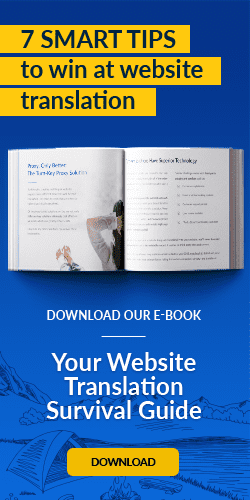Not too long ago, Search Engine Optimization (SEO) practitioners embraced—how should we put it?—questionable methods to artificially boost their organizations’ search results.
Consumers paid the price. To find worthwhile content, they waded through link farms, page cloaking, dodgy redirects, and endlessly-repeated keyword phrases. Those SEO pros won big in the short-term, but users lost, big time.
Google smarted up to these shifty tactics, and has consistently modified its algorithm to reward ethical content creators—especially those who make great, authoritative content. But what does “making great, authoritative content” really mean? And how can that benefit companies that are expanding into overseas online markets?
It’s not enough to have rave-worthy products, killer customer service, and a great on-site user experience anymore. To reach new global customers, you must dedicate as much care to your international content marketing efforts as you would for your primary-market website.
Producing high-quality writing, valuable headlines, human-readable URLs and meta-data is a must. So is localizing your company’s website into the market’s preferred language(s).
You must also build relationships through resonant and authentic customer engagement, media outreach, and a lots of inbound links from social media users. The more international customers consider you an authority (and link to your content or products as proof), the better your international PageRank becomes.
MotionPoint understands the unique challenges of international digital marketing. If your company is expanding into new online markets in 2016, here are a few best practices to consider:
Translation Quality
Companies shouldn’t skimp on translation, for starters. Content that’s translated with the utmost attention to quality—especially considering market-specific cultural nuances—will resonate with your target market, increase their engagement with your site.
Translation is an art, but there’s a hearty dollop of science here, too. The best vendors use data-driven analysis—A/B testing results, traffic, engagement metrics and more—to identify key shopping behaviors, and create ways to optimize the localized site’s translations, UX, conversion funnel, and more.
Translation quality is especially important, since Google’s translation algorithms have improved in recent years. Google’s technology can now “sniff” translated content and understand when it’s high value (meaning, well-crafted for human readers), and when it isn’t. High value content naturally ranks higher.
Localize, Localize, Localize
How a company presents itself on the web plays an instrumental role in winning—and keeping—customers. This is especially true for the quality of a localized site’s content.
Even when launching sites into international English-speaking markets, companies must consider dialects and cultural nuances. Anyone who’s compared the spelling of words such as color and colour … or discussed fashion slacks or trousers … know that there are many local differences, both in spelling and vocabulary, between American English and the British English.
Localized sites that don’t embrace these differences fail to generate as much traffic, engagement and rank as highly as those that do. Online shoppers pay attention to spelling and verbiage, and—as the Nielsen Norman Group famously reported—will abandon sites when such cues make the site feel “foreign.”
Get Social
Finally, be sure to examine the best practices powering your primary-market website and online marketing efforts, and replicate them in your new international markets. This includes great content, a robust and fleet-footed social media presence, and timely holiday-specific sales and promotions.
Clients entering global markets should strongly consider integrating social network functionality into their localized sites—especially the most-popular networks in those markets. These may be very different networks than Westerners are accustomed to.
This move ensures opportunities for traffic, revenue and conversion in these increasingly-connected markets. And, these efforts boost critical international SEO signals.
In With the New
Again, any website localization vendor can help you translate your international e-commerce sites, but it’s critical to work with one that understands the latest trends in international content marketing.
Look for a vendor that understands your customers’ browsing and buying habits, and can adapt its translations and persuasive messaging to best-reach those shoppers.
And remember the vendor must be fluent in other nuances, too, such as the unique regional UX expectations from global shoppers, international social media platforms (and the best methods to connect with their users), and opportunities for resonant localizations (from country-specific holidays to product lines that accommodate local climates).
Doing so will ensure that your organization is primed and equipped to adapt to win in 2016—both at home and in international markets.
Last updated on December 30, 2015
